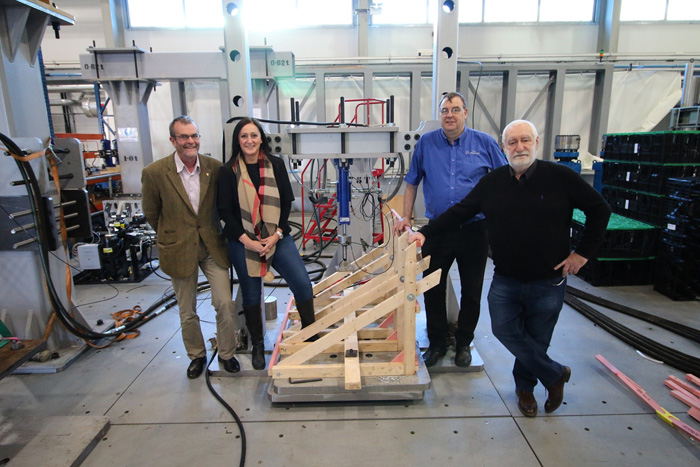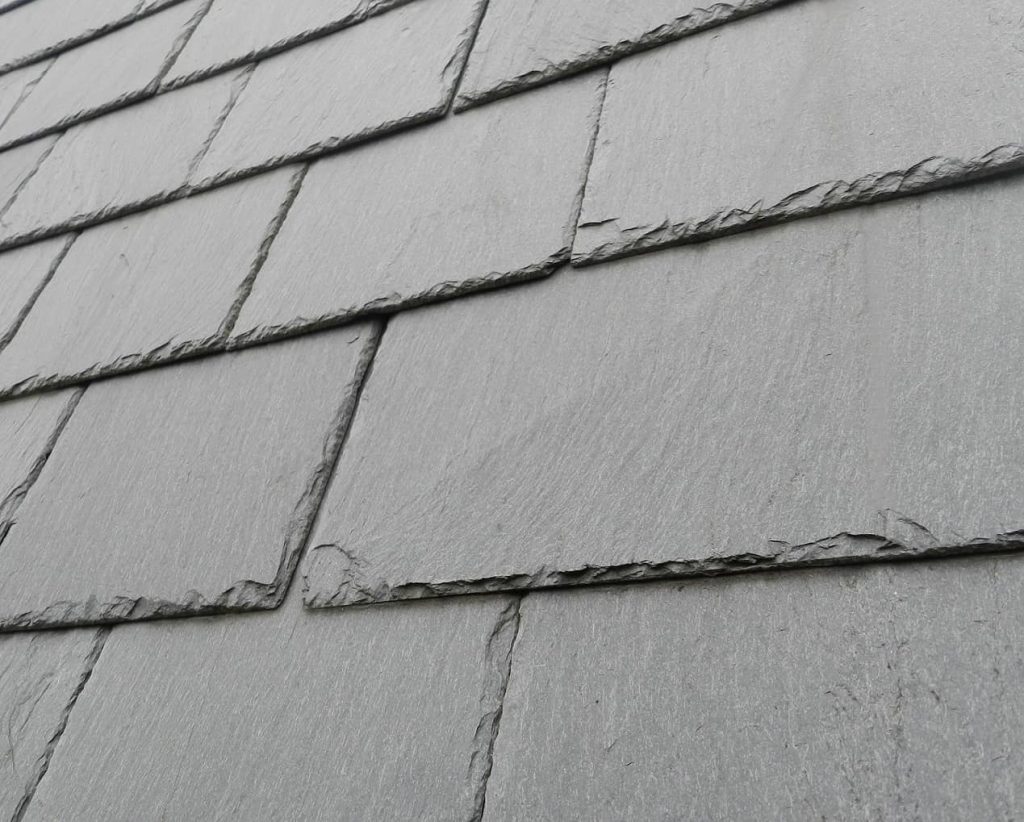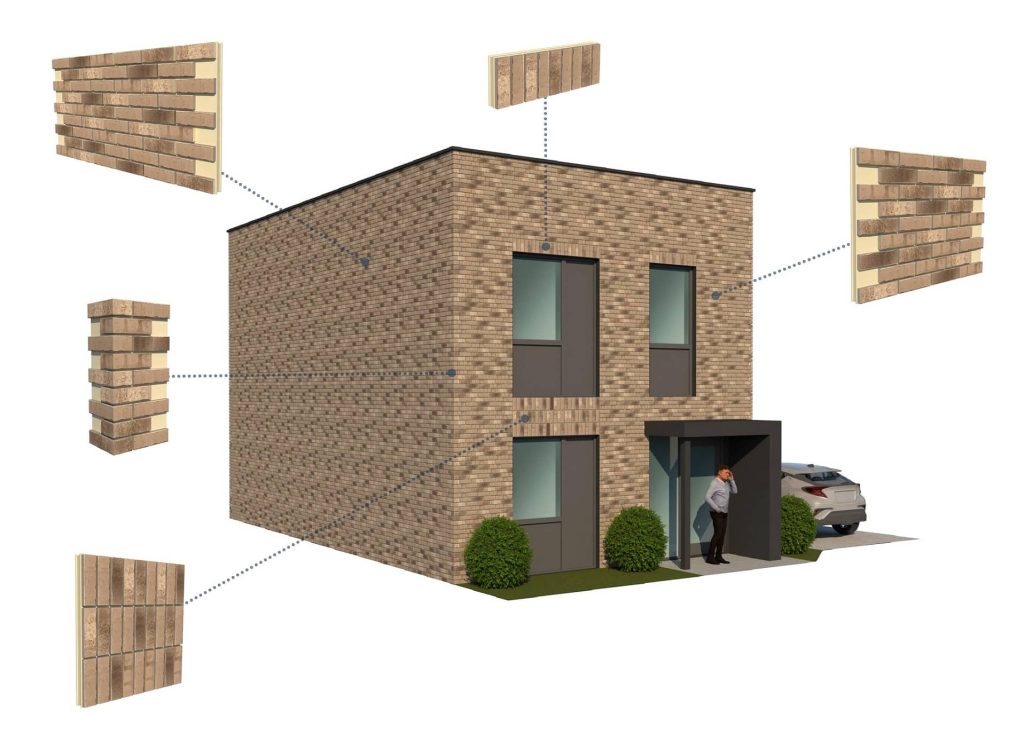Yorkshire entrepreneur is raising roofing standards with his invention


(Left-right) Head of the Advanced Structural Testing Centre at the AMRC, Phil Spiers, KEAH general manager Emma Johnson, AMRC technical lead for Structural Testing Shane Smith and KEAH director Ken Johnson with the KEAH roofing structure installed for testing in the Tall Rig at the AMRC.
A retired builder-turned-entrepreneur has invented and patented a brand-new method of joining roof battens which will not only improve construction safety, but make a roof quicker and easier to assemble than the traditional method.
The KEAH Roof Batten Joints have been tested and verified for use at the University of Sheffield Advanced Manufacturing Research Centre’s (AMRC) Advanced Structural Testing Centre (ASTC) after KEAH director, Ken Johnson, chose to work with the team there due to their ability to create bespoke testing systems and procedures at the UKAS accredited facility.
Ken Johnson, from Leeds, has spent the majority of his career as a builder and developer in the construction industry. After retiring from his construction businesses, he felt driven to put his own ideas formulated through his vast wealth of experience on building sites, into action to improve construction processes.
Ken created a new company, KEAH, to bring those ideas to life starting with the Plastic Pipe Chamfer and now the new roofing aid which is manufactured in Yorkshire.
The Roof Batten Joint is a plastic injection-moulded, push-fit ‘joint’ to connect horizontal wooden roof battens at any point along a roof structure, instead of needing to trim them to size and nail them to the vertical roofing spas.
Ken said: “After working in construction all my life and having first-hand experience of the issues that can cause delays and cost resources on site, I thought there must be a smarter way to complete those time-consuming intensive manual jobs.
“The KEAH Roof Batten Joint can join two roof battens at any point on the roof which will save time and material waste. The joints make felting and lathing a roof quicker, but also safer and stronger than the usual methods as they eliminate weakening of the roof structure from trimming and patching battens that can lead to split batten ends and joint failure.”
The ASTC are testing the batten joints to destruction using a bespoke testing technique. This includes strength testing 28 configurations of the batten joints using a ‘Moog control system’ and the ASTC’s own ‘Tall Rig’.
Phil Spiers, head of the ASTC, said: “KEAH constructed a roofing model that fits perfectly into our Tall Rig. The rig was developed during project work with Sheffield-based Gripple UK, and has the capability to conduct longer and more accurate tests for a variety of purposes.
“We applied loads to the KEAH joints using the rig until failure of the roof batten, noted the mode of failure and the maximum load achieved just prior to failure. Compared to the traditional joint the KEAH joints were capable of carrying an extra 10 stone on average.
“Our tests have so far shown that the joints are stronger than traditional nailed roof batten fixtures and experience lower rates of failure. We have validated that the optimum load weight for use is 20 stone, but the joints can support all the way up to 50 stone in weight.
“The idea for the product itself is beautifully simple, but it is a powerful concept that will make a laborious task safer.”



















